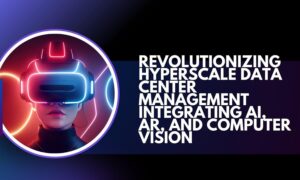It would be easy to say that augmented reality (AR) already had its moment. The mixed-reality tech seemed to saturate the global market in 2016 through the popularity Pokémon Go and social media filters. However, as the so-called hype dies down in public knowledge, uncovering the real benefits of AR is an easier task. And arguably more exciting.
In a GlobalData survey published in July, sentiments towards AR was perceived by 70 per cent of industry experts as the most disruptive technology in 2021’s second quarter, ahead of all others, including artificial intelligence. The same report also forecasts that the global AR market will be worth 76 billion USD by 2030, up from 4 billion in 2018.
In its immediate application, AR is already in daily use in social media and gaming, mixing utility with entertainment both for consumers and brands. Tech giants such as Snap, Facebook, Tencent, and ByteDance as well as retailers like IKEA have driven the push for AR and ecommerce, allowing users to virtually try on or try out products before they buy.
AR is also gaining traction in the automotive sector, with many well-established brands like Audi, Porsche, and Volkswagen already offering AR interactive windshields and heads-up displays as a top-shelf feature. Navigation apps like Apple Map and China’s AutoNavi are in the works to add AR features to help drivers on the road, with the hopes that Internet of Things and autonomous vehicles will provide room to grow for AR’s applications.
However, the true impact of AR has not yet been felt in the market. In fact, analysts predict that AR competitive advantage will not arrive before the next five to ten years. Its delayed impact could be explained as large-scale enterprise adoption being scared off by high start-up costs, data privacy concerns, and the unsophistication of most AR wearable tech.
However, the relative immaturity of the market is not a sign for pessimism. Instead, AR is a fascinating, and necessary, case study of the push and full of expectations upon emerging technologies, and the dangers of writing off future utility due to an over-hyped present.
Last month, Gartner released their annual Hype Cycle for Emerging Technologies report, providing a high-level view of important emerging trends in 2021. What makes the report a worthwhile read is that it looks at hype phenomena not as a retailer fad, but as a catalyst for transforming many industries.
The premise of the Hype Cycle is this: all emerging technologies begin with a technological trigger. As hype rises, so does the tech’s capabilities, until it reaches what Gartner calls the peak of inflated expectations. Nonfungible tokens are an example of an emerging technology that is at the summit of what the market expects.
However, expectations plumet as people get bored or disappointed in the tech’s present utility. The sector then enters a trough of disillusionment, before recovering to a slope of enlightenment as it matures. For the rest of the lifecycle, if it makes it that far, the tech enjoys a cruise along the plateau of productivity, its capabilities established, and social worth understood.
This is why it is short-sighted to write off AR just yet. We are already seeing its prospective utility in place to offer concrete and long-lasting benefits to a global population in the public health revolution amplified by the COVID pandemic. Today, AR technology is being used in hospitals across the UK to protect hospital staff and the public by reducing the need for physical contact. AR applications in medical schools also are inspiring collaboration, mobility, and remote learning on a scale unheard of just a few years ago.
AR is also poised to target everything from chronic pain management, mental health and addition to behavioural conditions and neurorehabilitation. It has been effective in exposure therapy, for instance combatting debilitative phobias in a non-invasive and cost-effective manner. It’s operating in the realm of science fiction, as US firm Augmedix has gifted surgeons ‘x-ray vision’ with tech that allows them to see a patient’s anatomy through skin and tissue while operating.
Recent research and development partnerships like Harman’s collaboration with Roche and Microsoft’s recent takeover of Nuance is evidence of the wider market understanding the social impact of AR, as well as its profitability.
As the market share grows, technological innovation will be the key enabler of competitive differentiation in not only making AR widely accessible but delivering better care. This is something to be excited for, as emerging technologies are continually appearing, challenging even the most innovative organizations to keep up.
But while it’s easy to get lost in the hype of breakthrough developments, the core principles of all technology must be to engineer trust, accelerate growth and create lasting change. As the world further digitalises, blurring the lines of connectivity from screen to screen and human to human, it will be even more important that social impact remains at the forefront of all technological growth.



































